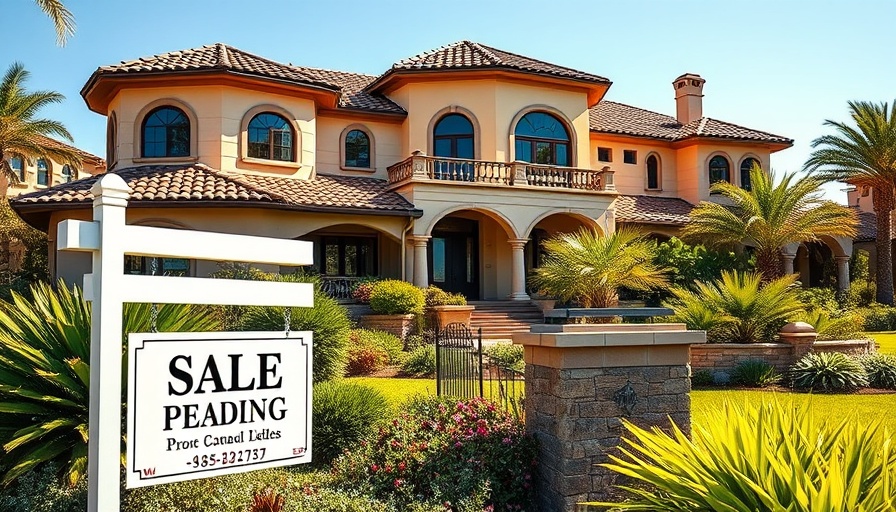
Understanding L.A.'s Mansion Tax: An Overview
In 2022, voters in Los Angeles made a pivotal decision by approving Measure ULA, commonly referred to as the mansion tax. This initiative introduces a 4% tax for property sales exceeding $5 million and a 5.5% tax for those over $10 million. While the intention behind Measure ULA is commendable—aiming to fund low-income housing developments—the execution reveals critical flaws that need addressing.
Who Really Pays the Price?
One of the most alarming aspects of the mansion tax is that it applies not just to lavish homes but to nearly every property priced above the $5 million mark, including commercial real estate, apartment buildings, and even sound stages. This expansive definition implies that many unsuspecting property owners could face hefty taxes even if their properties have significantly depreciated in value.
Consider an office building that has lost almost 90% of its value due to market fluctuations yet still sells for $15 million, triggering an overwhelming ULA tax. Conversely, a homeowner who purchased a house for $500,000 years ago and is selling it for $1.5 million would escape the tax entirely, creating an unfair tax burden inequity.
The Danger of ‘Tax Cliffs’
Measure ULA’s structure also introduces considerable “cliffs” where small price increases lead to steep tax jumps. Selling a property for $5 million incurs no tax, yet selling for just one dollar more results in a staggering $200,000 in taxes. Such drastic escalations incentivize property owners to hold onto their real estate to avoid being taxed.
The result? An alarming 50% decrease in high-value property sales in L.A. after the tax's implementation—significantly more than elsewhere in California. This drop in transactions suggests that the measure's design is not just punitive but could be counterproductive to the city’s housing goals.
Shortfalls in Revenue Generation
Though Measure ULA was projected to generate between $600 million to $1.1 billion annually, actual collections have only averaged about $288 million. The failure to meet original revenue expectations places additional strain on the programs it was designed to support, further exacerbating issues around affordable housing.
A Broader Fusion of Perspectives
While Measure ULA aims to address income disparities and housing shortages, it does so at a critical juncture where economic pressures—aside from taxation—are impacting property values and selling behaviors significantly. The implications of the mansion tax reach beyond simple economic analysis, affecting the livelihoods and decisions of many residents who call Los Angeles home.
Refining the Mansion Tax: Suggestions for Improvement
To make Measure ULA truly effective, it’s imperative that stakeholders engage in a discussion about possible reforms. Revisions could include adjusting the thresholds to lessen the impact of tax cliffs, devising policies that take into account the market value and condition of properties, and implementing a tiered tax rate based on time owned or appreciation factors.
A fresh evaluation and redesign of how the mansion tax is structured could provide a fairer and more sustainable approach, ensuring it fulfills its mission without penalizing property owners during challenging economic conditions.
Conclusion: Call to Action for Community Involvement
The municipality of Los Angeles is now at a crossroads, and your voice matters. Engage in discussions within your neighborhood and local government forums about how the mansion tax can be remodeled to ensure it meets its intended purpose without placing undue burdens on property sellers. Change is possible—together, we can advocate for reforms that champion equity and responsibility in L.A.'s housing market.
 Add Row
Add Row  Add
Add 




Write A Comment